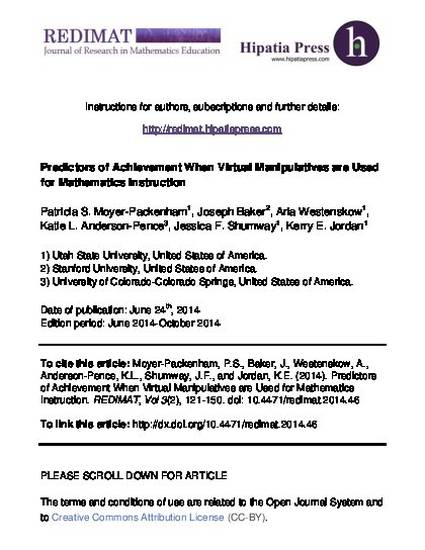
Article
Predictors of achievement when virtual manipulatives are used for mathematics instruction.pdf
Journal of Research in Mathematics Education
(2014)
Abstract
The purpose of this study was to determine variables that predict performance when virtual manipulatives are used for mathematics instruction. This study used a quasi-experimental design. This design was used to determine variables that predict student performance on tests of fraction knowledge for third- and fourth-grade students in two treatment groups: classroom instruction using texts and physical manipulatives (CI), and computer lab instruction using virtual fraction applets (VM). The Pre-test, Post-test 1, and Post-test 2 measured learning and retention of fraction concepts. Observation ethograms documented representation use. The results revealed that fewer demographic predictors of student performance (e.g., socio-economic status, English language learner status, and gender) exist during fraction instruction when virtual manipulatives were used. When instructors used virtual manipulatives, there was an equalizing effect on achievement in third and fourth grade classrooms, in that fewer demographic factors were influential for VM groups compared to CI groups.
Keywords
- Virtual manipulatives,
- fraction learning,
- grade 3 and 4
Disciplines
Publication Date
2014
Citation Information
Jessica F. Shumway. "Predictors of achievement when virtual manipulatives are used for mathematics instruction.pdf" Journal of Research in Mathematics Education Vol. 3 Iss. 2 (2014) p. 121 - 150 Available at: http://works.bepress.com/jessica-shumway/3/
